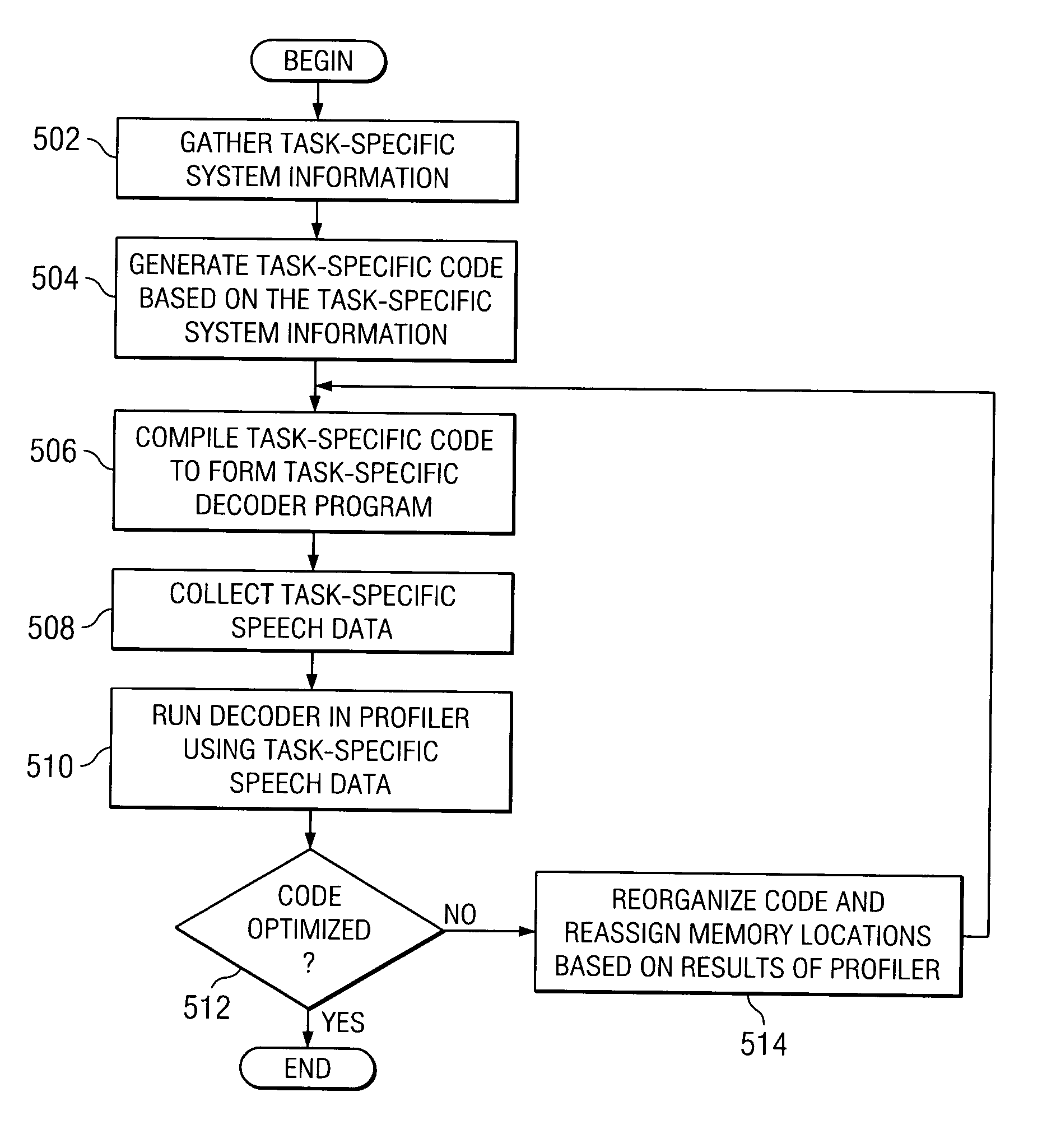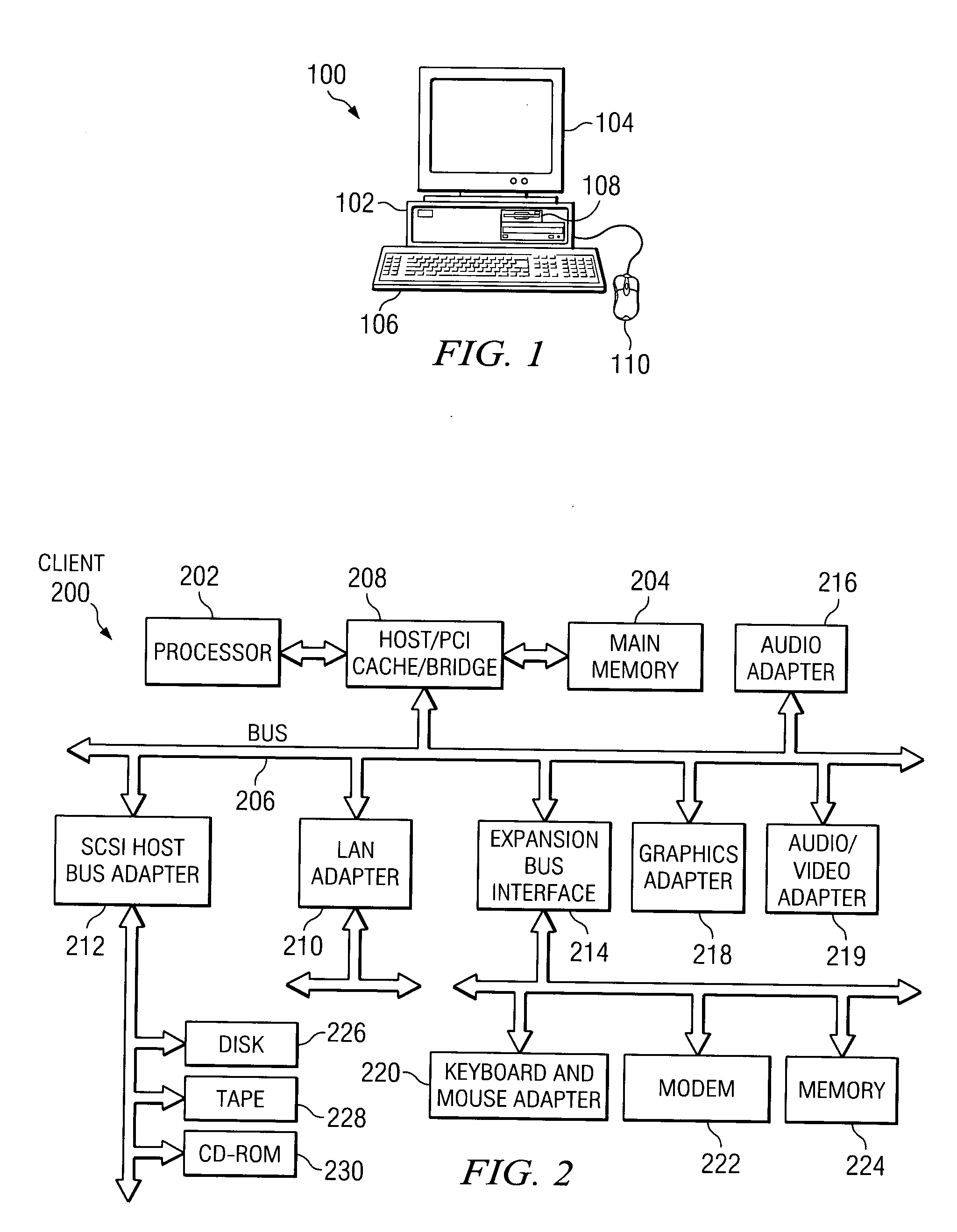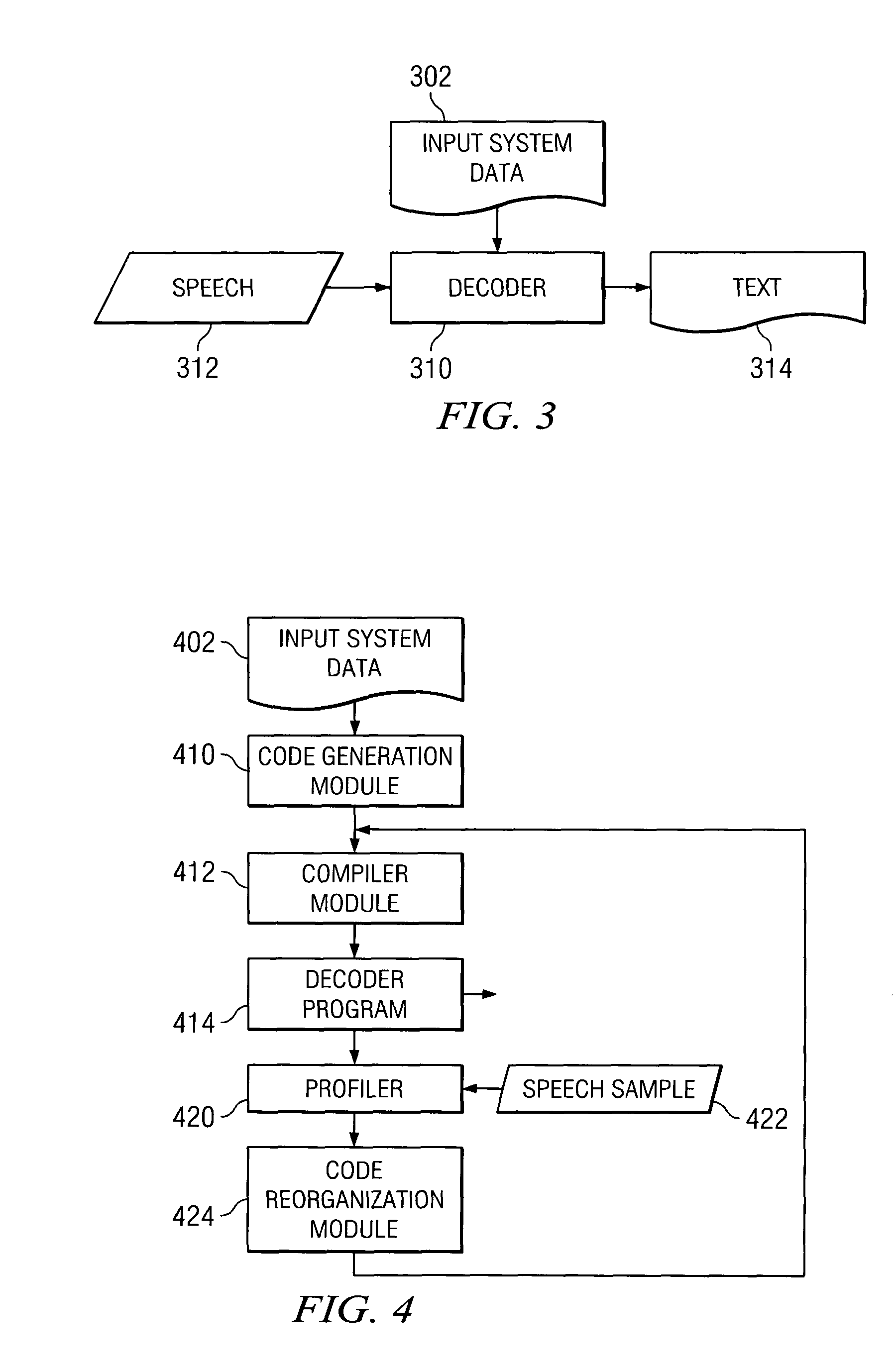Task specific code generation for speech recognition decoding
a task-specific and speech recognition technology, applied in the field of data processing systems, can solve the problems of speech recognition systems and the inability to take advantage of the regularity of these computations, and achieve the effect of improving code generation and optimization
- Summary
- Abstract
- Description
- Claims
- Application Information
AI Technical Summary
Benefits of technology
Problems solved by technology
Method used
Image
Examples
Embodiment Construction
In the exemplary aspects of the present invention, the speed of a speech recognition system is increased, for example, by automatically generating code that is specific to a particular task. For example, code may be generated that is optimized for a particular grammar or for a particular set of Gaussians, or for a particular vocabulary. This process is related to the process of profile-based optimization. See P. P. Chang, S. A. Mahlke, and W. W. Hwu, “Using profile information to assist classic compiler code optimizations,” Software Practice and Experience, 21(12):1301-1321, 1991, herein incorporated by reference. In profile-based optimization, a program is first written and run with typical input parameters, and an execution profile is generated. This profile indicates such events as cache-misses, pipeline stalls, and memory paging. Based on the information present in the profile, the program code is re-organized so as to reduce the expected runtime when the program is recompiled ...
PUM
 Login to View More
Login to View More Abstract
Description
Claims
Application Information
 Login to View More
Login to View More - R&D
- Intellectual Property
- Life Sciences
- Materials
- Tech Scout
- Unparalleled Data Quality
- Higher Quality Content
- 60% Fewer Hallucinations
Browse by: Latest US Patents, China's latest patents, Technical Efficacy Thesaurus, Application Domain, Technology Topic, Popular Technical Reports.
© 2025 PatSnap. All rights reserved.Legal|Privacy policy|Modern Slavery Act Transparency Statement|Sitemap|About US| Contact US: help@patsnap.com



